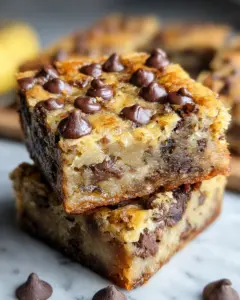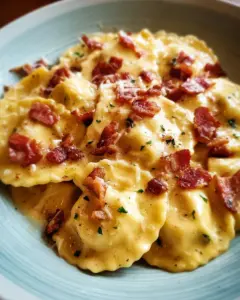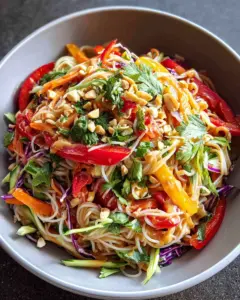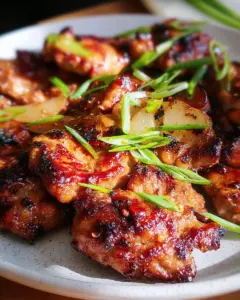Asparagus stuffed chicken breast is a dish that effortlessly marries simplicity with gourmet appeal. Imagine tender, juicy chicken enveloping a vibrant filling of crisp asparagus, creamy mozzarella, and tangy sun-dried tomatoes—each bite delivers a harmony of textures and flavors. This recipe is perfect for both busy weeknights and special occasions, offering a protein-rich, low-carb meal that’s as nutritious as it is delicious. The golden sear locks in moisture, while baking ensures the chicken cooks evenly, resulting in a dish that’s restaurant-worthy yet achievable for home cooks.

Preparation Phase & Essential Tools
Before diving into the recipe, gather the right tools to streamline the process:
- Sharp Knife: A high-quality chef’s knife ensures clean, precise cuts when creating pockets in the chicken breasts. Ragged edges can lead to filling leakage.
- Cutting Board: Use a sturdy, non-slip board for safe ingredient prep.
- Cast-Iron Skillet: Ideal for searing and baking, as it distributes heat evenly and transitions seamlessly from stovetop to oven.
- Toothpicks: Essential for securing the stuffed chicken to prevent filling spillage during cooking.
- Meat Thermometer: The most reliable way to check doneness (165°F/74°C at the thickest part).
Why These Tools Matter
A cast-iron skillet isn’t just versatile—it enhances flavor by creating a perfect sear and retaining heat during baking. Meanwhile, a meat thermometer eliminates guesswork, ensuring food safety without overcooking.
Pro Preparation Tips
- Dry the Chicken: Pat breasts dry with paper towels before seasoning. Moisture prevents proper browning.
- Trim Asparagus: Snap off woody ends (about 1–2 inches from the bottom) for tender bites.
- Even Thickness: Pound thicker chicken breasts lightly to ensure uniform cooking.
Ingredients List
For the Chicken:
- 4 skinless, boneless chicken breasts (about 1.5 lbs)
- 1 teaspoon Italian seasoning (or a mix of dried basil, oregano, and thyme)
- 1 teaspoon garlic powder
- 1 teaspoon smoked paprika (adds depth; substitute with regular paprika if needed)
- Sea salt and black pepper to taste
For the Filling:
- 12 asparagus stalks (trimmed to fit the chicken pockets)
- 1 ounce sun-dried tomatoes (chopped; oil-packed for extra flavor)
- 4 slices mozzarella cheese (or provolone for a sharper taste)
For Cooking:
- 1 tablespoon olive oil (or avocado oil for higher smoke point)
Step-by-Step Instructions
- Preheat the Oven
Set your oven to 400°F (200°C). This ensures it’s hot enough to cook the chicken through after searing. - Season the Chicken
Lay the chicken breasts flat on a cutting board. Sprinkle both sides evenly with Italian seasoning, garlic powder, smoked paprika, salt, and pepper. - Create the Pockets
Using a sharp knife, make a horizontal slit along the side of each breast, about ¾ of the way through. Avoid cutting all the way to the edges to keep the filling enclosed. - Prepare the Filling
For each chicken breast, layer 3 asparagus stalks and a few pieces of sun-dried tomatoes on a slice of mozzarella. Roll the cheese around the filling to hold it together. - Stuff and Secure
Gently tuck each cheese-and-vegetable bundle into the chicken pockets. Use toothpicks to seal the openings. - Sear to Perfection
Heat olive oil in a cast-iron skillet over medium-high heat. Add the stuffed chicken and cook for 3–5 minutes per side until golden brown. This step builds flavor and texture. - Bake to Finish
Transfer the skillet to the oven and bake for 15–20 minutes, or until the internal temperature reaches 165°F (74°C).
Recipe Variations
- Cheese Swap: Try goat cheese for tanginess or pepper jack for a spicy kick.
- Vegetable Alternatives: Replace asparagus with sautéed spinach or roasted red peppers.
- Herb Boost: Add fresh basil or thyme to the filling for aromatic complexity.
Now that your asparagus stuffed chicken breast is perfectly cooked, it’s time to elevate your meal with thoughtful pairings and avoid common pitfalls. This section covers ideal serving styles, frequent mistakes to sidestep, and a curated list of side dishes to complement your main course.
Serving Suggestions
Presentation matters, especially for a dish as visually appealing as this one. Here’s how to serve it like a pro:
- Slice for Visual Appeal: After resting the chicken for 5 minutes, slice it diagonally to reveal the colorful filling. This showcases the layers of asparagus, melted cheese, and sun-dried tomatoes.
- Drizzle with Sauce: A light lemon butter sauce or balsamic reduction adds brightness and ties the flavors together.
- Garnish Freshly: Sprinkle with chopped parsley, basil, or a pinch of red pepper flakes for a pop of color and freshness.
For a balanced plate, pair the chicken with sides that contrast its richness. A crisp salad or roasted vegetables work beautifully.
Common Mistakes to Avoid
Even experienced cooks can stumble with stuffed chicken. Here’s how to perfect your technique:
- Overstuffing the Chicken: Packing too much filling risks bursting during cooking. Stick to 3 asparagus stalks and a modest amount of cheese per breast.
- Skipping the Sear: Searing creates a flavorful crust and locks in juices. Don’t rush this step—aim for a deep golden brown.
- Underseasoning: The chicken and filling both need ample seasoning. Taste the filling mixture before stuffing and adjust as needed.
- Using Thick Asparagus: Thick stalks can be tough and hard to roll. Opt for medium-thin asparagus for tender bites.
- Skipping the Toothpicks: Secure the openings well to prevent cheese from oozing out during baking.
How to Perfect the Recipe
For foolproof results every time, follow these pro tips:
- Chill Before Cooking: After stuffing, refrigerate the chicken for 15 minutes. This helps the cheese firm up, reducing leakage.
- Use a Meat Thermometer: Chicken is safe at 165°F (74°C), but remove it at 160°F (71°C)—it will carry over to the perfect temp while resting.
- Rest Before Slicing: Let the chicken sit for 5 minutes after baking. This redistributes juices, keeping it moist.
Side Dish Recommendations
The right sides turn this dish into a complete meal. Here are 8 pairings to consider:
- Garlic Mashed Potatoes: Creamy and comforting, balancing the chicken’s savory notes.
- Lemon Parmesan Roasted Asparagus: Double down on asparagus with a zesty twist.
- Quinoa Pilaf: A protein-packed, gluten-free option with herbs and toasted nuts.
- Arugula Salad: Peppery arugula with shaved Parmesan and a lemon vinaigrette cuts through richness.
- Roasted Cherry Tomatoes: Sweet, burst-in-your-mouth tomatoes add vibrancy.
- Crusty Bread: Soak up juices with a warm baguette or focaccia.
- Sautéed Green Beans: Quick, crisp, and lightly garlicky for a fresh contrast.
- Creamy Polenta: Silky and rich, ideal for soaking up the chicken’s flavors.
For a low-carb meal, focus on non-starchy vegetables like roasted Brussels sprouts or a cucumber salad. If you’re serving guests, a charcuterie board with cured meats and olives makes an elegant starter.
Wine Pairings
Enhance the dining experience with a well-matched wine:
- White Wine: A crisp Sauvignon Blanc or Chardonnay complements the asparagus and cheese.
- Red Wine: A light Pinot Noir works if you prefer reds—avoid heavy tannins that overpower the dish.
- Rosé: A dry rosé bridges the gap between white and red, offering versatility.
Completing your culinary journey with asparagus stuffed chicken breast requires knowing how to store leftovers, answer common questions, and put the finishing touches on this versatile dish. This final section provides practical advice for meal prep, troubleshooting, and inspiration for future variations.
Recipe Tips for Best Results
To ensure your stuffed chicken turns out perfectly every time, keep these expert tips in mind:
- Cheese Selection: While mozzarella melts beautifully, provolone or Gruyère add sharper flavor. For a creamy twist, try goat cheese or Boursin.
- Asparagus Prep: Blanch thicker asparagus spears for 1 minute before stuffing to guarantee tenderness.
- Even Cooking: If your chicken breasts vary in thickness, pound them to an even ½-inch thickness for consistent results.
- Flavor Boost: Add a teaspoon of Dijon mustard or pesto to the filling for extra depth.
- Crispy Finish: For a golden crust, broil the chicken for the final 2–3 minutes of baking.
Storage & Reheating Instructions
Refrigeration
- Let the chicken cool completely before storing (within 2 hours of cooking).
- Place in an airtight container with parchment paper between pieces to prevent sticking.
- Store for up to 3 days.
Freezing
- Wrap each breast tightly in plastic wrap, then aluminum foil to prevent freezer burn.
- Freeze for up to 1 month. Thaw overnight in the refrigerator before reheating.
Reheating
- Oven Method (Best for Texture):
- Preheat oven to 325°F (165°C).
- Place chicken on a baking sheet, cover loosely with foil, and heat for 10–15 minutes until warmed through.
- Stovetop Method:
- Reheat gently in a skillet over low heat with a splash of broth or water to retain moisture.
- Avoid the Microwave: This can make the chicken rubbery and dry.
Frequently Asked Questions
Can I use frozen asparagus?
Yes, but thaw and pat it completely dry to avoid excess moisture, which can make the filling soggy.
How do I prevent the cheese from leaking out?
- Chill stuffed chicken for 15 minutes before cooking.
- Secure openings tightly with toothpicks or kitchen twine.
- Avoid overfilling—stick to 1 slice of cheese per breast.
Can I prep this ahead?
Yes! Assemble the stuffed chicken up to 24 hours in advance and refrigerate. Add 2–3 extra minutes to the baking time if cooking straight from the fridge.
What’s the best way to check doneness?
Use a meat thermometer inserted into the thickest part of the chicken (avoiding the filling). It should read 165°F (74°C).
Can I make this keto-friendly?
Absolutely. This recipe is naturally low-carb (just 7g net carbs per serving). For stricter keto, omit sun-dried tomatoes or replace with roasted red peppers.
Why is my chicken dry?
Overcooking is the culprit. Remove chicken at 160°F (71°C)—it will reach 165°F while resting. Also, avoid over-pounding the breasts, which reduces juiciness.
Nutritional Benefits
This dish isn’t just delicious—it’s nutritious:
- High-Protein: 33g per serving, ideal for muscle repair and satiety.
- Low-Carb: Asparagus adds fiber (2g per serving) without excess carbs.
- Rich in Vitamins: Asparagus provides vitamin K, folate, and vitamin A, while sun-dried tomatoes offer lycopene.
For a calorie-conscious version, reduce cheese to half a slice per breast and use cooking spray instead of oil.
Conclusion: A Dish Worth Mastering
Asparagus stuffed chicken breast is a standout recipe that balances simplicity and sophistication. Whether you’re cooking for a weeknight dinner or entertaining guests, its versatility and vibrant flavors make it a repeat-worthy meal.
Final Tips for Success:
- Experiment with fillings like spinach and feta or mushrooms and Swiss cheese.
- Pair with seasonal sides—think roasted squash in fall or zucchini noodles in summer.
- Double the recipe and freeze half for effortless future meals.
With these insights, you’re equipped to make this dish your own. From perfect searing to creative variations, stuffed chicken breast is a canvas for endless culinary creativity.
Asparagus Stuffed Chicken Breast
Ingredients
For the Chicken:
- 4 skinless boneless chicken breasts (about 1 ½ lb)
- 1 teaspoon Italian seasoning mix
- 1 teaspoon garlic powder
- 1 teaspoon smoked paprika
- Sea salt and pepper to taste
For the Filling:
- 12 asparagus stalks ends trimmed
- 1 ounce sun-dried tomatoes chopped
- 4 slices mozzarella cheese
For Cooking:
- 1 tablespoon olive oil
Instructions
Preheat Oven:
- Preheat your oven to 400°F (200°C).
Season Chicken:
- Place the chicken breasts on a clean cutting board. Sprinkle both sides with Italian seasoning, garlic powder, smoked paprika, sea salt, and pepper.
Cut Pockets:
- Using a sharp knife, cut a pocket into the side of each chicken breast lengthwise. Be careful not to cut all the way through.
Prepare the Filling:
- Lay three asparagus stalks and a few pieces of sun-dried tomatoes on a slice of mozzarella cheese, then roll it up to hold the filling together.
Stuff the Chicken:
- Stuff each chicken breast with the cheese-asparagus-tomato roll. Secure the opening with a toothpick to keep the filling in place.
Sear the Chicken:
- Heat olive oil in a large cast-iron skillet over medium-high heat. Add the stuffed chicken breasts and sear for 3-5 minutes per side until golden brown.
Bake:
- Transfer the skillet to the preheated oven and bake for 15-20 minutes, or until the chicken is fully cooked (internal temperature of 165°F/74°C).
Serve:
- Remove the toothpicks and serve immediately. Enjoy!
- Notes
- Cheese Substitute: Mozzarella can be swapped for provolone or another favorite cheese.
- Vegetable Variations: Try using broccoli or another vegetable instead of asparagus.
- Oil Options: Avocado or grapeseed oil work well in place of olive oil.
- Storage: Store leftovers in an airtight container in the refrigerator for up to 3 days. Reheat gently in the oven or on the stovetop to maintain juiciness.






